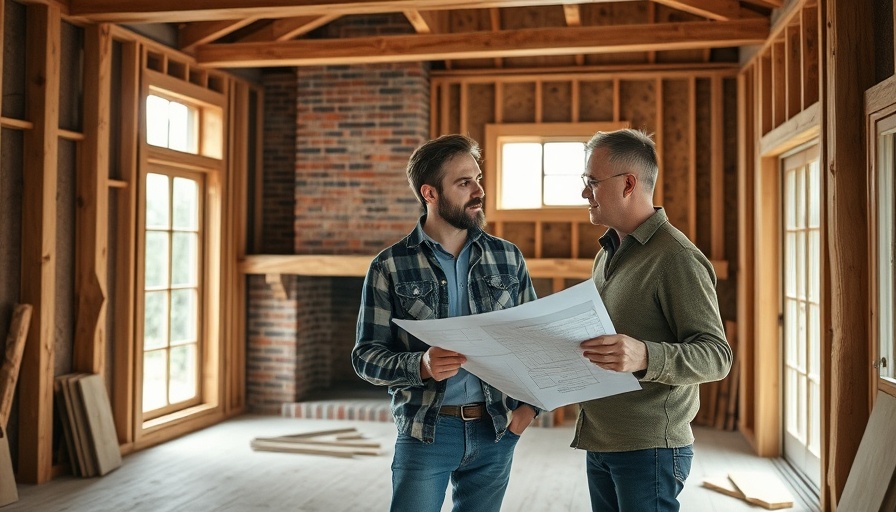
Unveiling the Charm of a Vintage California Carriage House
For many, the allure of an old home lies in its stories and character. When I stumbled upon an 1850s carriage house tucked away in a charming neighborhood, I was immediately smitten. The nostalgia wrapped in the walls spoke to me. However, my excitement quickly led to the realization that undertaking a renovation of this magnitude would be both a blessing and a Herculean task.
From Naivety to Realization: The Journey Begins
Back in 2019, my partner and I ventured into the world of home renovation with hearts full of enthusiasm. Our commitment pushed us through each step as we visualized what this historic treasure could become. But amidst our dreams danced the oft-ignored specter of the extensive projects that awaited us. As the renovations of our main house and yard dragged on, that initial excitement turned to contemplation. Would this ever be more than an endless cycle of labor?
Yet, here we are in 2025, staring at a façade filled with possibilities. The first glimpse of the carriage house in its original state showcased its dated appreciate—a symphony of white paint peeling against green trim. And while one might only see a rundown structure, we saw the charm that reminded us of a simpler time.
Preserving History Amidst Renovation
Feature-rich but age-stricken, this carriage house encapsulates quintessential California architecture. The lap siding, though cracked in places, holds a warmth that invites brainstorming about how to preserve its integrity while honoring its legacy.
The sliding door on train tracks, a remnant of its past, poses a dilemma: should we keep this nostalgic element, or replace it with modern functionality? It’s a classic tug-of-war faced by many California homeowners trying to balance heritage and convenience.
Transformations: Painting, Renewing, and Rehoming
A few years ago, with the first hint of transformation, the outbuildings received a coat of fresh white paint—an effort that, while minimal, was pivotal in breathing new life into an unassuming property. Yet the effort left me pondering the importance of aesthetic choices in community identity.
When my friends visited, they would glance past the house—fascinated yet oblivious to the charm hidden within its dilapidation. “Where is this house you keep talking about?” they would ask. Little did they know, they had walked past its quiet presence a hundred times.
The Value of Awareness in Community Initiatives
Undertaking this renovation not only rejuvenates our space but revitalizes interest in our community's history. As we carefully restore elements while integrating modern comforts, we’re also participating in a broader dialogue about sustainability and heritage preservation in suburban California.
Finding Inspiration: Restoring Beauty One Step at a Time
Engagement with local preservation societies, similar to those you might find across California, can provide endless resources for homeowners interested in maintaining the character of their properties. By attending workshops, you can connect with like-minded individuals prioritizing restoration over replacement. Whether through eco-friendly materials or updates that respect the original architecture, the possibilities are endless.
Embracing Challenges and Celebrating Small Wins
The journey toward a full renovation is strewn with challenges, from dealing with doubts about structural integrity to uncertainties about design choices. But as homeowners, we must love every bit of the process because it’s within these moments of transformation that we find our commitment to community-driven living.
What feels daunting today may just become a cherished anecdote tomorrow, a reminder of how we have navigated life, projects, and community together. In an increasingly transient housing market, holding onto treasures like our carriage house is paramount to preserving the stories that shape our neighborhoods.
Step Inside Our Future: Join Us on This Journey
As we embark on this slow DIY renovation, anticipation builds for the moments we’ll share here with our community. Follow along as we transform this historic carriage house into a beautiful abode, celebrating the warmth of history while embracing modern living.
Do you have experiences renovating old homes or a favorite element in your neighborhood that tells a story? Share them with us! Seal your connection with our community through your stories and let’s inspire others to appreciate the rich narratives woven into the fabric of our communal spaces.
 Add Row
Add Row  Add
Add 




Write A Comment